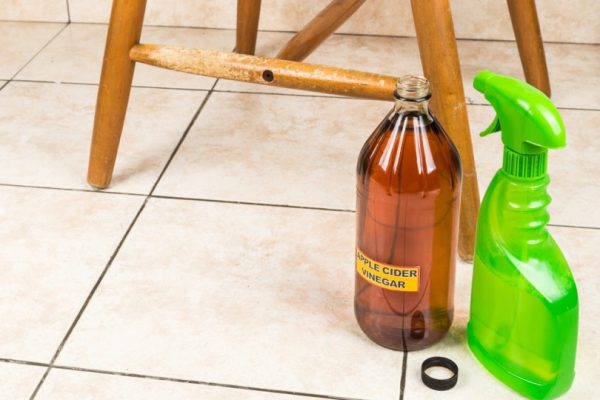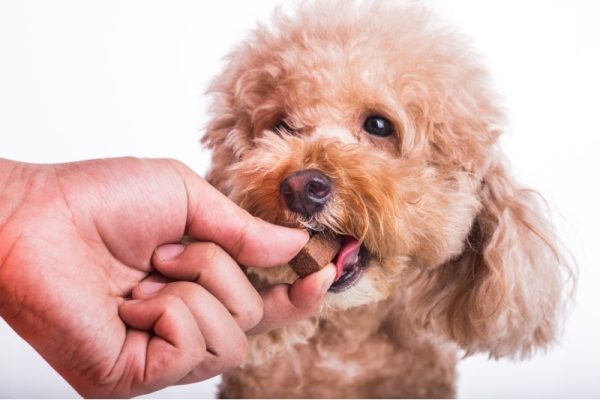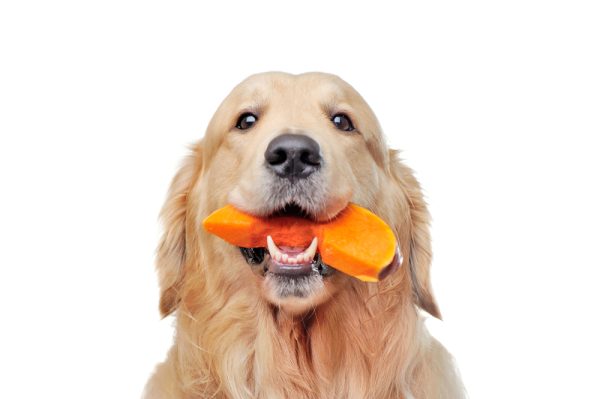Out of all the pieces of agility equipment, the pause table is probably one of the least exciting. However, it can be extraordinarily challenging. You have to make a dog that’s going at full speed slow down and pause. For many canines, this is a skill that must be built over time. Most dogs just want to get off the pause table and keep going. Getting them to stay there is intensely difficult.
Mastering the agility pause table helps your canine’s obedience and focus. This isn’t a challenge for the body but one for the mind. This is one of the few pieces of agility equipment that can improve your dog’s behavior in everyday life. If your canine will stop, sit, and lay down when you’re at a distance, they’ll do just about anything you ask.
Getting this table mastered can be difficult, but we’ll help you through it with a few tips in this article.

The 9 Agility Pause Table Training Tips
1. Break It Down
There are two basic steps to using the pause table: getting on the table and performing the commands on the table. Make it easier on your dog by breaking this down. Don’t ask them to do both the first time, or they may get overwhelmed. Instead, break the two parts down separately and then add them together after they have been mastered separately.
Getting on the table is pretty straightforward. You can simply have your canine practice jumping onto the table. This is a very easy thing for most dogs to learn. However, it is a step that they need to master.
You can also remove the top of the table and simply have your canine perform the commands on that spot. If your dog already knows how to perform commands while on a particular spot, then this part should be easy.
When your dog can perform the commands easily and doesn’t mind jumping on the table, you can put them together. Both of these steps are very easy when separated, which makes it far easier to teach your pup.

2. Practice, Practice, Practice
The only way for your canine to master this skill is to practice. You should begin by practicing with little difference between you and the dog. Then, you can increase the distance between you and the dog. If the dog has already over-practiced the commands with you close, they should practically do it automatically when you’re further away.
The hardest part for most dos to master is stopping on the table in an agility course. Often, dogs get excited and just want to keep going, which can make it difficult for them to pause at all. You can start by having your dog simply run up to the table and then jump onto it. They’ll need to stop running and pause. Add in other pieces of agility equipment as necessary.
You should aim to practice for 15 minutes, twice a day. Short sessions are best, as your dog likely won’t be able to stay focused for much longer.
3. Don’t Forget to Train Distance
We’ve already mentioned this briefly, but it is a common mistake among those who compete in agility. Your dog will likely be some distance away from you during a trial. They must be able to listen to your commands from a distance. This also means that hand motions are necessary, as you won’t be able to simply say the commands.
You should increase the distance slowly. Don’t suddenly stand far away and try to give your dog commands. If they’re only used to receiving commands when you’re next to them, they likely won’t know what to do. Increase by a few feet each time until your dog is a decent distance away from you.

4. Use the Commands in Everyday Life
You should extend the commands into everyday life. This will help your dog understand that the commands just aren’t applicable when they are on the pause table. Do them on a leash when you’re walking. Work them into their mealtime routine. This can all be essential when it comes time to actually do the routine.
This is also a great way to ensure that your dog can accomplish the pause table with distractions. Walks can be extremely distracting. Of course, always set your dog up for success, and don’t ask them to do something they probably won’t accomplish. If they just learned these commands, don’t plan on throwing in distractions just yet.
5. Add Some Fun to It
Training can be tough. The pause table is often quite boring and won’t necessarily be your favorite thing to train. Therefore, you shouldn’t just train the pause table, or you may find yourself missing the motivation to train at all. Consider combining the pause table with other things—not at the same time, though.
Your dog may be a bit bored as well. For this reason, you may want to add treats or another fun reward that will motivate your dog. After all, jumping up and down on a box can only be exciting for so long.
Of course, be sure to lavish them with praise whenever they sit, stay, or lay down. Patience is important when it comes to the pause table.

6. Switch Out Other Equipment
You shouldn’t keep your equipment all in the same order. If you do, your dog will assume that they only need to listen when the equipment comes in a specific order. When it is suddenly in a different order at a trial, they may be terribly confused. For this reason, we recommend switching it up at home. Make sure different pieces of equipment come before and after the pause table.
You should preferably start with a short course. As your dog masters it, add in more. It is best to avoid too many pieces of equipment while the dog is still growing. However, you can switch the pieces of equipment out to ensure that they are always in a different order.
You shouldn’t use the pause table during every practice run either. If you do, your dog may become reliant on it and could lose focus if it isn’t there. Instead, we recommend adding the pause table occasionally after your dog has mastered it.
7. Incorporate a Stay Before Your Dog Jumps
Some dogs get a bit too excited and will try to jump on the table while in a full sprint. Often, this will cause them to slide off the other side of the table, which is the last thing you want. For this reason, we recommend teaching your dog to “stay” before they jump onto the table. This should be a standing stay, but it will help them slow down before they jump onto the table.
Some tables are treated with non-slip coatings, but dogs will still slip if they are going fast.

8. Practice Getting Off on Command
Some trainers make the mistake of having their dogs practice commands on the table and then end the session without telling the dog to get off. During a competition, you need your dog to jump off the table at the appropriate time. For this reason, you’ll need to release your dog with a specific command.
You need to practice this command as your dog practices the pause table. Otherwise, your dog might not dismount the table when you need them to, which can mess up your time considerably.
Preferably, your dog should already know a release command. If they don’t, now is the time to teach them. You can also use a “run” command if you choose. It generally doesn’t matter, as long as your dog leaves the table when you tell them to.
9. Practice Longer Holds Than Necessary
Generally, during trials, your dog will need to stay on the pause table for five seconds. However, they cannot get off until after the judge says the “go” word. The judge will typically start talking when the five seconds are up, but it will take them a bit longer to finish. For this reason, your dog will actually need to stay for a bit longer than five seconds.
Furthermore, your dog shouldn’t be struggling to stay there. You want them to be confident. Train harder than your dog actually needs and work their stay up to at least 8 seconds. At some point, your dog will reach a point where they will stay for practically forever if you ask them to. This is the sort of confidence you want them to have.


Conclusion
The pause table is completely different from many of the other pieces of agility equipment. Your dog isn’t actually doing anything with their body. In fact, the point is to stop doing anything at all. This can be very easy for some dogs, but others may find it challenging.
Start slow and practice more than you need to. All the distractions at a trial can make this difficult for your dog to accomplish without over-practicing at home. Be sure to incorporate the release command, as these are often overlooked parts of training.
See also:
- AKC Agility Invitational: What Is It & How To Compete
- Outward Hound Zip & Zoom Indoor Agility Kit Review: Pros, Cons & Verdict
Featured Image Credit: Mark Herreid, Shutterstock


















